Understanding Jujube Rootstock and Suckering
On Grafting
A very common practice in horticulture and agriculture is to graft (attach) an above-ground piece from one species onto the well-rooted stump of another species. The two parts are left to fuse together and become one. After several years it can be very hard, if not impossible, to find the grafted region on a tree.
The above-ground piece is called the scion, and the well-rooted stump is called the rootstock.
Scions are grafted onto rootstock for several reasons:
- to propagate material from species that don’t strike well from cuttings
- to propagate material from species that have a low or difficult seed germination rate
- to propagate material from species that have too much variability from seed
- to have a tree reach flowering (ornamental plants) or fruiting (food plants) maturity more quickly
Rootstock is chosen for grafting for several reasons:
- resistance to disease
- resistance to rot
- some unique characteristic such as the ability to dwarf a tree
Understanding Jujube Rootstock
Jujube rootstock tends to sucker. Suckering is when a root beneath the ground sends up a shoot which becomes a new tree above the ground. This can be desirable when wanting to propagate more plants, but can also be undesirable where it interferes with the productivity or enjoyment of a tree.
Problems will arise when suckering is not controlled on a jujube tree. One major problem is that suckers will grow into full-sized trees if allowed, and eventually completely dominate the original tree. Another undesirable trait is that jujube rootstock suckers are very thorny — much more so than the jujube cultivar — and very unpleasant to encounter.
Let’s explore jujube suckering visually. The photo below is of a Li grafted onto rootstock, clearly showing a new sucker developing near the trunk and beneath where the soil surface would be:
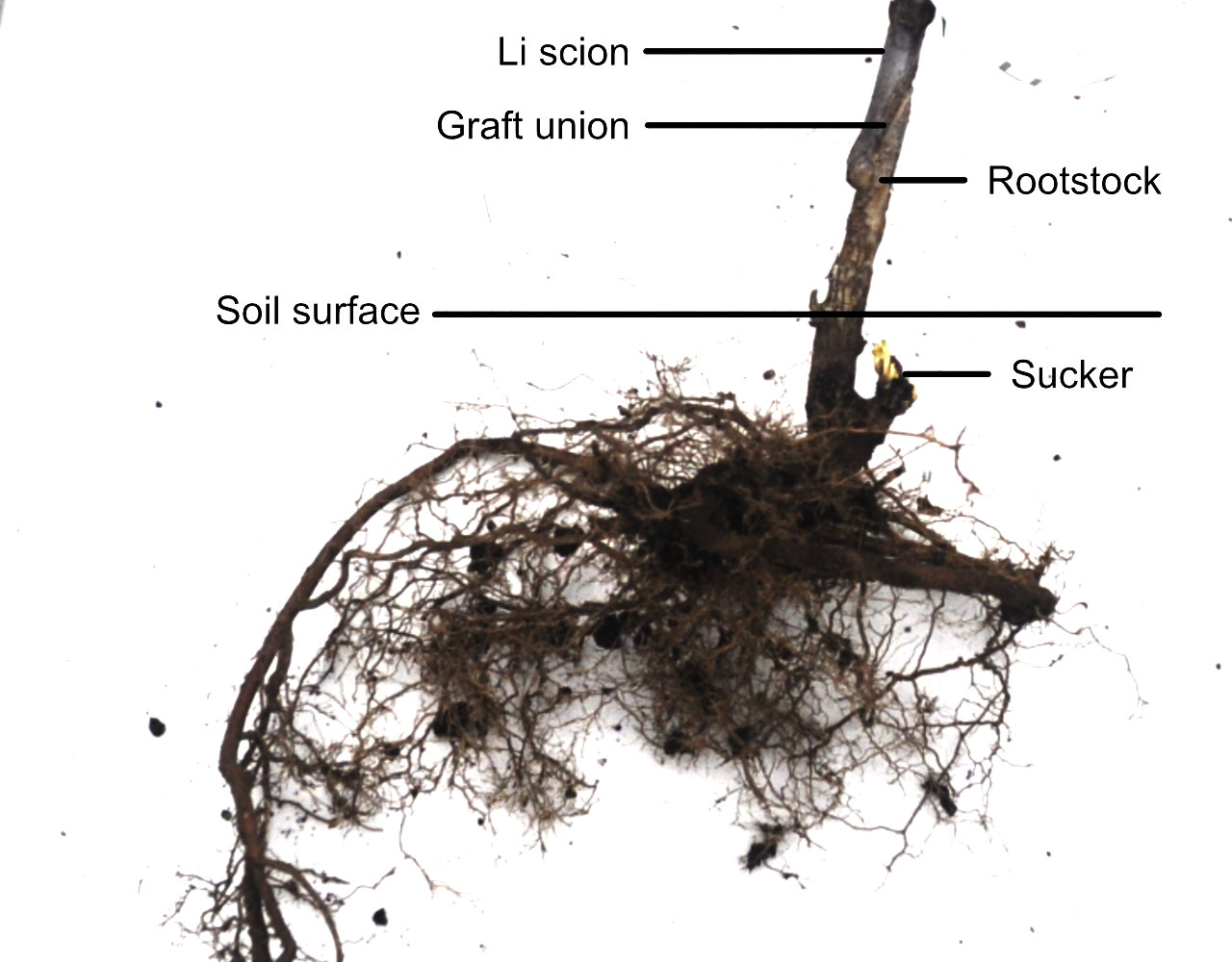
© Optimate Group Pty Ltd
This developing sucker would become very annoying very quickly, being so close to the main trunk. This is because once it protrudes above the surface it will continue to grow upwards, and with very thorny growth which reduces access to the main tree. Its trunk will also be the same width as the main tree’s trunk. Not only will the sucker deprive the tree of energy, which could have been used for fruit production, but the rootstock itself will never grow the same fruit as the main tree, as it is a different species.
Suckers can form anywhere along the roots.
This Chico has a lot going on around the base of its rootstock trunk, with multiple suckers forming:
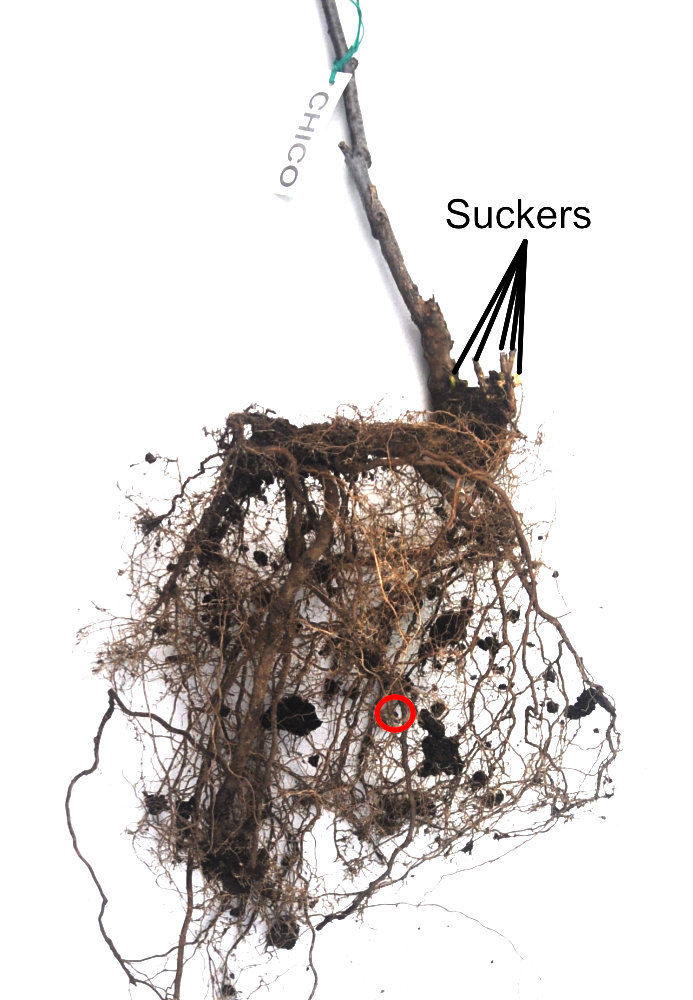
© Optimate Group Pty Ltd
But let’s zoom in on that red circle much lower down:
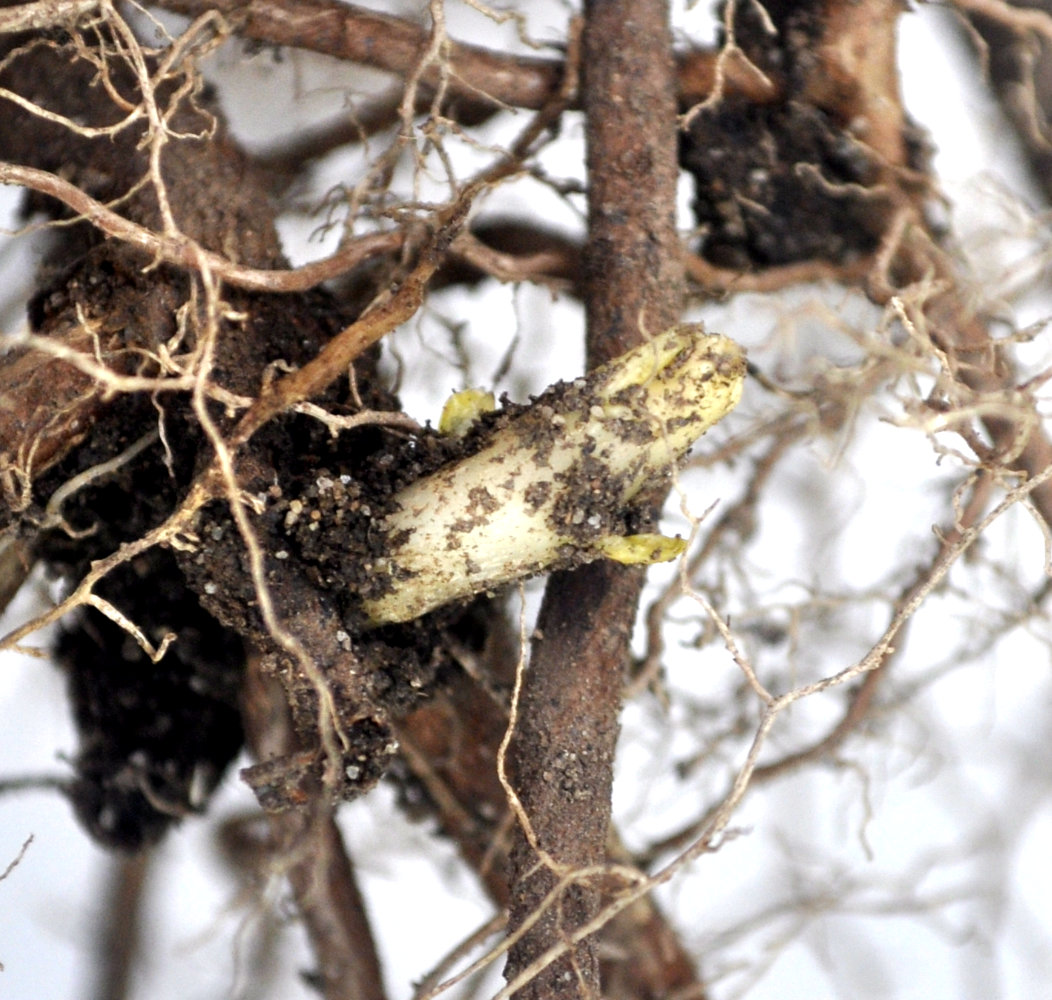
© Optimate Group Pty Ltd
It’s yet another sucker forming, much deeper down!
Here is a photo of suckers popping up around the base of a young Li:
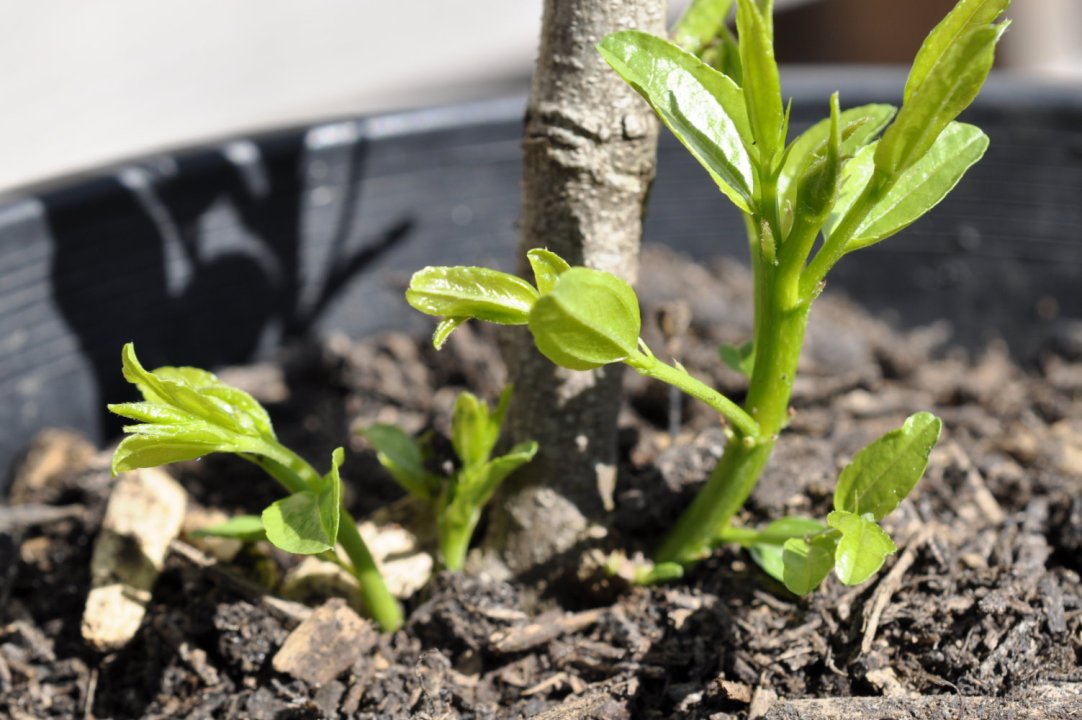
© Optimate Group Pty Ltd
Now picture rootstock roots spreading far underground, and imagine suckers forming anywhere along that length. Jujube rootstock suckers can pop up metres away! It is very important to control suckering on a jujube tree.
Controlling Suckering on a Jujube Tree
If left unchecked on a young tree, rootstock very close to the trunk can take over the graft completely. If left unchecked around older and established trees, suckers can grow to full-sized trees themselves and dominate the mother tree. It is always best and easiest to remove suckers as they emerge.
Rootstock is recognisable by its smaller leaves and the more numerous, nastier, thorns than the cultivars. You may have to click on the photo below and view at full size in order to see the thorns, but the difference in size between the upper Lang jujube tree leaves with the lower rootstock leaves is immediately apparent.
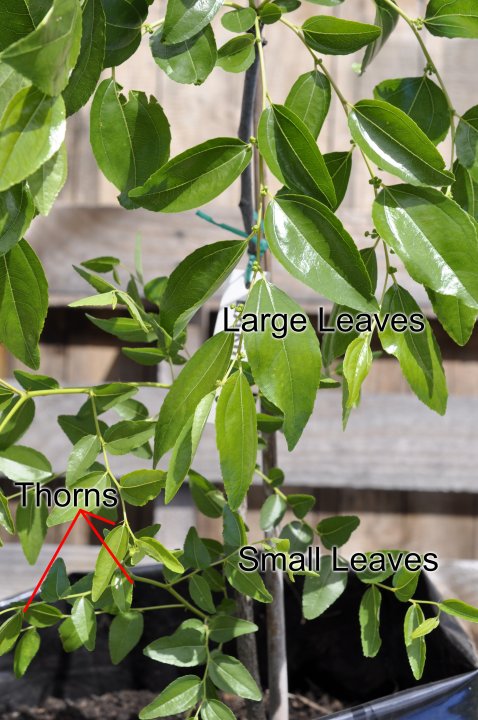
© Optimate Group Pty Ltd
You can control suckers in potted trees by simply cutting them off with secateurs. If your trees are in the ground, mow over any small emerging suckers, otherwise cut more established ones to ground level with secateurs or other tools. It’s best to keep control to ground level, as attempts to dig them out will create more from the root fragments invariably left behind.
While jujube rootstock can sucker metres away, there is some evidence to suggest that trees in the ground when well-watered within the drip line (the area of ground covered by a tree’s canopy) are less likely to send out distant suckers—if the water comes to them then they appear less likely to go to the water. Still, exercise care if intending to plant in a garden or lawn as you may create tensions with neighbours or discover suckers coming up in places you’d never have thought likely.
About the Author
BSc(Hons), U.Syd. - double major in biochemistry and microbiology, with honours in microbiology
PhD, U.Syd - soil microbiology
Stumbled into IT and publishing of all things.
Discovered jujube trees and realised that perhaps I should have been an agronomist...
So I combined all the above passions and interests into this website and its blog and manuals, on which I write about botany, soil chemistry, soil microbiology and biochemistry - and yes, jujubes too!
Please help me buy a plant if you found this article interesting or useful!